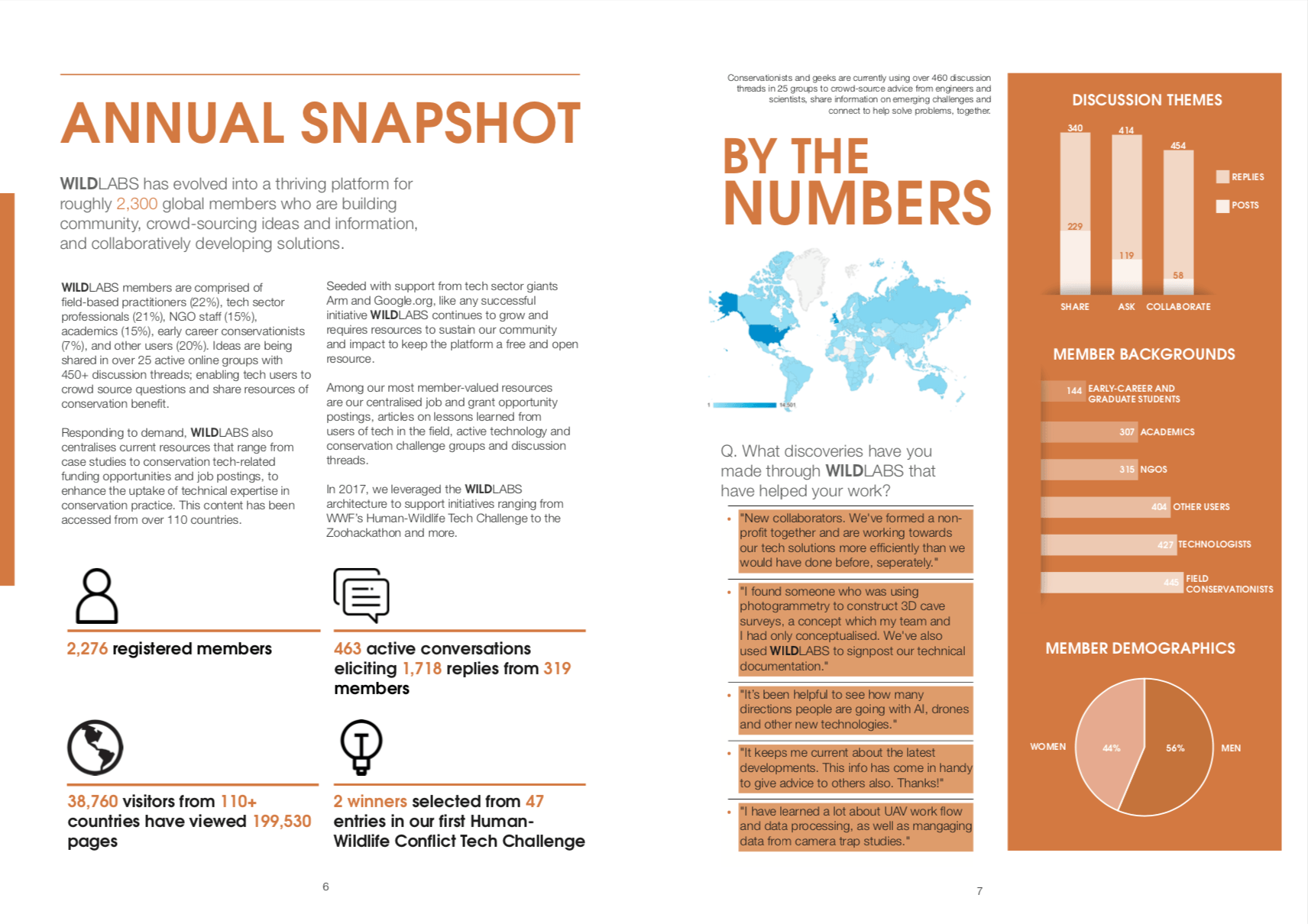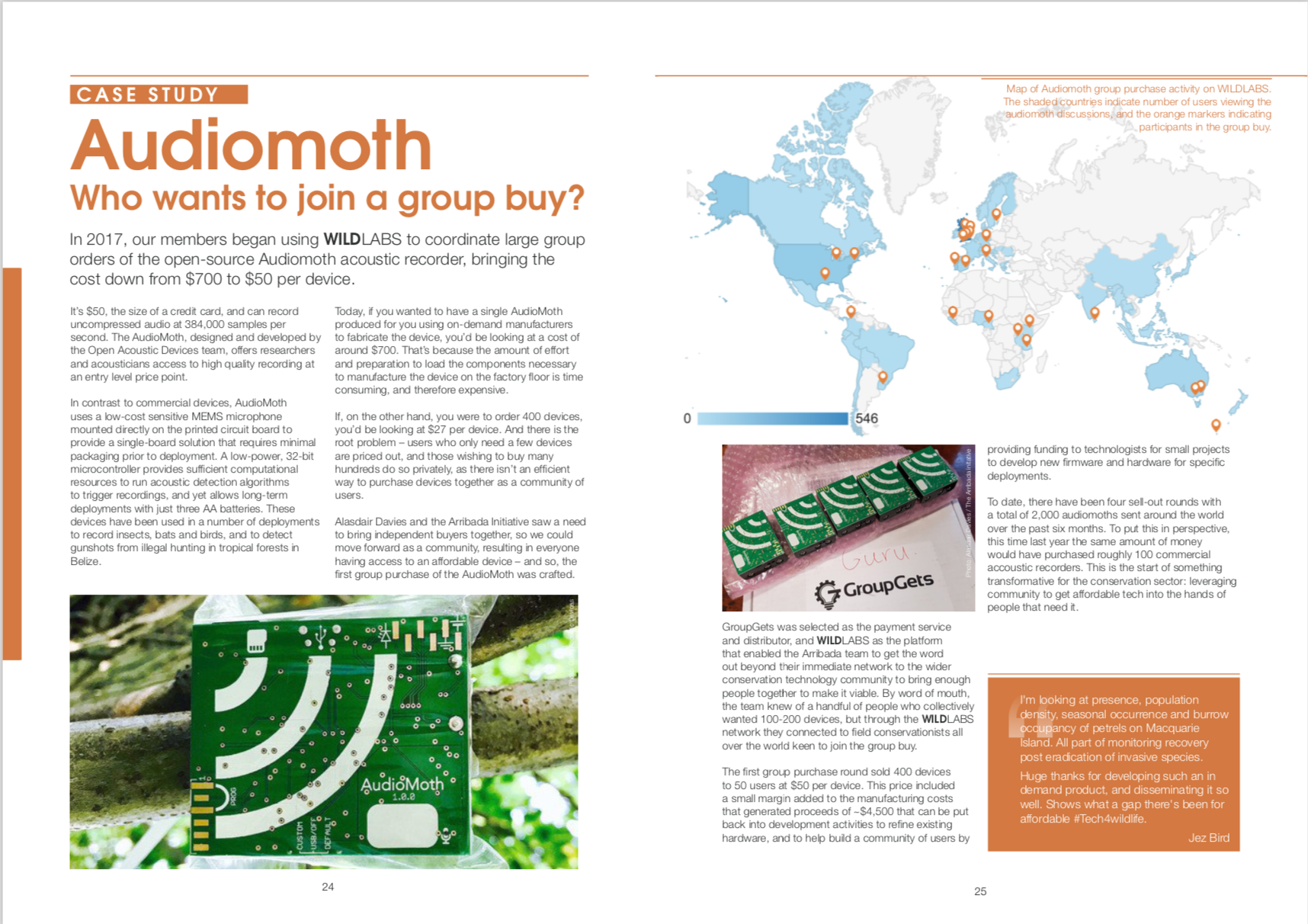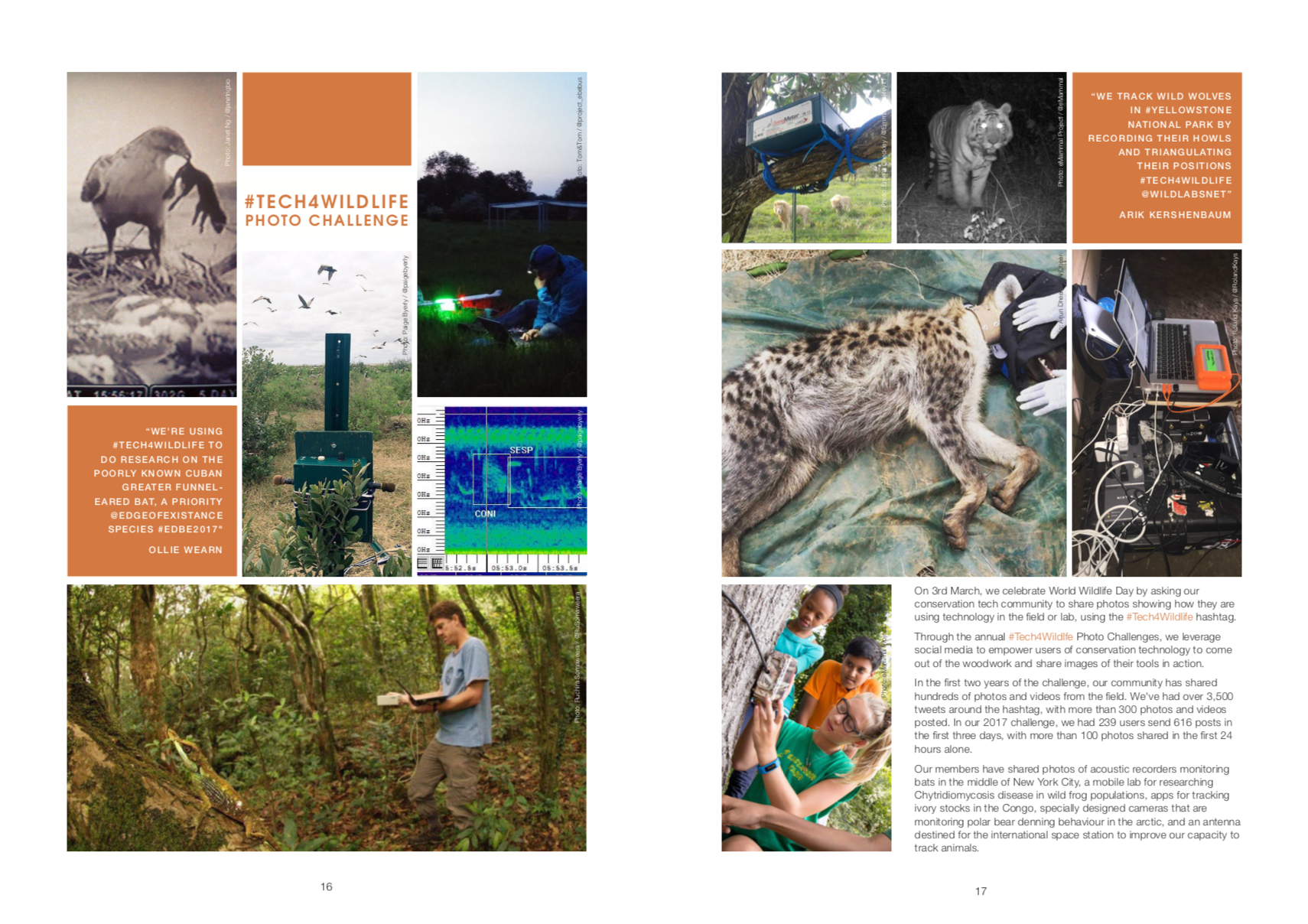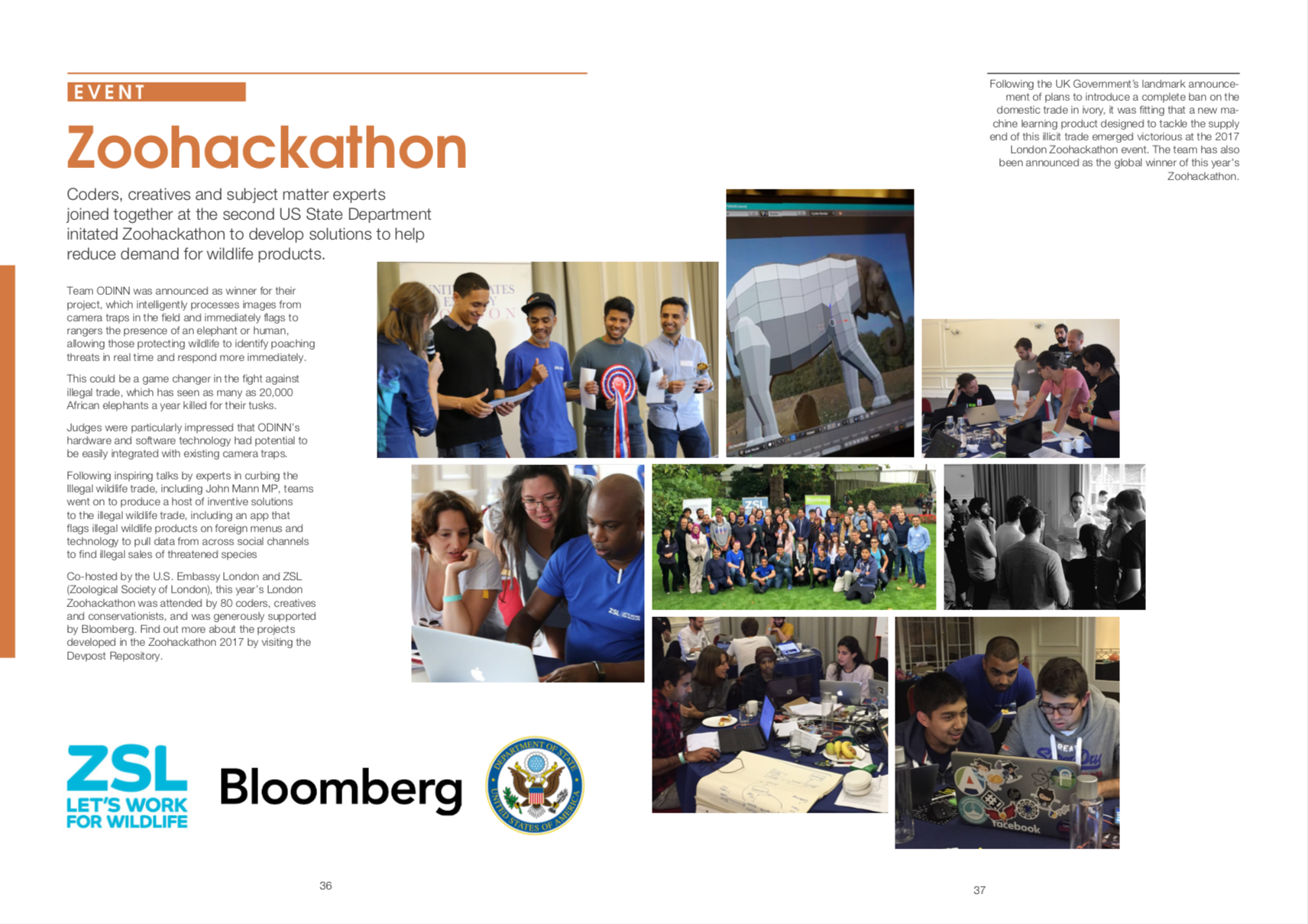Founded through United for Wildlife, WILDLABS is the first-of-its-kind online community with a mission to support technology applications that conserve species. WILDLABS’ 2017 Annual Report, released today, offers a look back at two years of activity and impact.
“Tech can be tricky. Sometimes it takes a village to find the right tool for a task in conservation,” said Rachel Kramer, WILDLABS Steering Committee Chair and WWF’s Manager of Wildlife Conservation and TRAFFIC. “Through WILDLABS, we’re working to grow that village.”
Since WILDLABS’ launch in late 2015 it has become a platform for 2,300 experts around the world to openly share information and collaborate on technology solutions to pressing conservation challenges. Wildlife conservationists and tech geeks alike are using over 460 discussion threads in tech and conservation challenge groups. These threads have been viewed over 38,000 times, helping to democratise access to lessons learned and to crowd-source advice from engineers and scientists.
Last year WILDLABS helped to connect a group of researchers to pool limited conservation resources to bring down the cost of open-source acoustic monitoring devices from the unaffordable $700 per unit, to $50 via an Audiomoth group buy. Each year, researchers and conservationists share images of their technology in action around the world through WILDLABS’ #Tech4Wildlife Photo Challenge.
WILDLABS helped two bear researchers—Ed Miller and Melanie Clapman—to find each other and leverage machine learning to identify individual bears from citizen photographs and camera trap images. Developing this recognition technology will help to assess and monitor bear populations, providing wildlife researchers with a new, non-invasive methodology to survey bears in the wild. “Through WILDLABS, I've found new collaborators,” said Clapham. “We have formed a non-profit together and are working towards our tech solutions more efficiently than we would have done before, separately.”
“We never dreamed that WILDLABS would be used in such diverse ways,” said Kramer. In 2017, WILDLABS partnered with WWF to launch the Human-Wildlife Conflict Technology Challenge. The winners of that challenge continue to share their experiences from field-piloting innovations.
As an open community, anyone can visit WILDLABS to learn about how conservationists and technology experts are using the online platform to:
- Share information to increase transparency and reduce replication of effort
- Ask and answer questions to share best practice, to increase efficiency and effectiveness of technology deployment to address conservation challenges
- Collaborate to improve existing technologies or develop new technologies that address identified conservation needs
The Annual Report shares highlights of how our community is doing exactly this.
Highlights from the WILDLABS Annual Report 2017
By the Numbers
Our Annual snapshot gives our key metrics at a glance, and highlights feedback members shared in our WILDLABS Community Survey, 2018.
The Bear ID Project
'Through WILDLABS, I've found new collaborators. We have formed a non-profit together and are working towards our tech solutions more efficiently that we would have done before, separately.'
Melanie Clapham
Audiomoth: Who wants to join a group buy?
Our members began using WILDLABS to coordinate large group orders of the open-source Audiomoth acoustic recorder, bringing the cost down from $700 to $50 per device.
#Tech4Wildlife
Through the annual #Tech4Wildlfe Photo Challenges, we leverage social media to empower users of conservation technology to come out of the woodwork and share images of their tools in action.
Zoohackathon
Coders, creatives and subject matter experts joined together at the second US State Department initiated Zoohackathon at ZSL to develop solutions to help reduce demand for wildlife products.
Human-Wildlife Conflict Tech Challenge
In 2017, our global Human-Wildlife Conflict Tech Challenge mobilised engineers, designers and makers to create new and improved tools to prevent conflict between humans and wildlife










Add the first post in this thread.